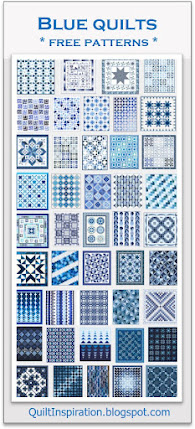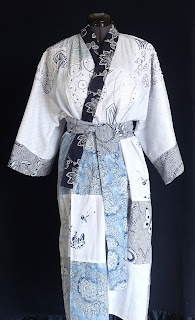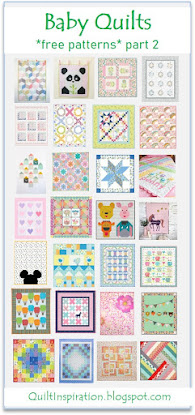Scarlet and Indigo, 16 x 16, by Judy Mathieson, for the Alzheimer's Art Quilt Initiative
The names "Scarlet and Indigo" have an almost mystical connotation. The deep shades of red and blue remind us of the famous Rothko painting called "Number 207", below:
Number 207, aka Red over Dark Blue on Dark Grey, 1961, 92.8 x 81.2, by Mark Rothko, as seen at the Berkeley Art Museum/Pacific Film Archive
Is this "scarlet" is a true red, or more of an orange-red, or a blue-red? The online color thesaurus suggests that "scarlet" is equivalent to coral red and "indigo" is equivalent to blue-violet. To check it out further, we did an online color analysis of the "Scarlet and Indigo" quilt using a handy website called Kuler* ("kuler" is pronounced like "color", not "cooler"). On Kuler, you can upload an image and obtain exact color values for different portions of the image. Here is the result for the "Scarlet and Indigo" quilt (click on the image to see the detail, including RGB, CMYK and hex values):
Comparing these RGB and CMYK values to the Ultimate 3-in-1 Color Tool
 by Joen Wolfrom, we can see that "indigo" is a very dark shade of true blue (blue plus black) while "scarlet" is a deep shade of orange (orange plus black). These hues are not complementary, but we think they are beautiful in these dark shades. The navy blue is so dark that it "reads" as a neutral; in the Rothko painting it looks black. Perhaps that's one key to the success of this scheme.
by Joen Wolfrom, we can see that "indigo" is a very dark shade of true blue (blue plus black) while "scarlet" is a deep shade of orange (orange plus black). These hues are not complementary, but we think they are beautiful in these dark shades. The navy blue is so dark that it "reads" as a neutral; in the Rothko painting it looks black. Perhaps that's one key to the success of this scheme.What about red, white and blue... do you think they go together ? Many flags use this color scheme, such as in this striking vintage quilt top seen at auction (below). This quilt has plenty of white space, which was used to separate the blocks and avoid visual overload.
We like red, white and blue in flags, but we've seen examples where the blues and reds clash or where the pattern is too brilliant. What do you think of the combination of periwinkle with red in the fabric below?
And what about this cerulean blue and orange-red combination, below ?
The color combination above just doesn't work for us... cerulean blue's complement is yellow-orange, not red-orange, so this combination seems to clash. Also, you'd think that white would be neutral, but we just don't like white with orange-red. (It's not that we don't like orange-red per se; it looks stunning in combination with aqua blue, as shown in the fish quilt in our complementary colors post).
As an alternative to white, we love blue and red with gray. For example, consider the combination of dark navy blue with scarlet in "Waves" (below) by Beth Carney at Beth Carney Studio :
A combination of blue and red with cream, ivory, or beige is also an option, as in the Celebration of Freedom quilt by Judy Laquidara, shown below. The center star is set on a white background, which makes it stand out, while the star blocks are surrounded by a warm beige.
Actually, the beige in the above quilt is a tone of golden-yellow (golden-yellow plus gray), which explains why this quilt is successful: it is really a three-color or "triadic" color scheme with tones of red, blue and yellow. For more examples of quilts with triadic color schemes, stay tuned for our next post.
Take-away points and notes to self:
- Consider using a dark (navy) blue as in "Indigo and Scarlet" and "Waves", or muted (grayed-down) blues and reds, as in many civil war quilts.
- Remember the complementary pairings: blue-violet with golden yellow; blue with orange-yellow; cerulean blue with yellow-orange; turquoise with orange; and aqua blue with orange-red. Use the ultimate 3-in-1 color tool
 as a guide to fabric selection.
as a guide to fabric selection.- When using blue and red together, consider substituting ivory, beige or gray for some or all of the white, as in "Celebration of Freedom" and "Waves".
Finally, we'd love to know about any blue-and-red or red-white-and-blue quilts you've made, and why they were successful!
Image credits and links: Judy Mathieson's website can be found at Judy's Place. "Celebration of Freedom" by Judy Laquidara was first shown in our Celebration of Freedom post; you can find Judy Laquidara at the Patchwork Times. "Waves" by Beth Carney was first shown in Quilters Remember September 11.
*Note that the Kuler website uses a traditional color wheel, for example, where red is opposite or complementary to cyan. In our complementary colors post we discussed why it is better to use the Ives color wheel. As mentioned above, we first assess CMYK values using color extraction tools like Kuler, then use the ultimate 3-in-1 color tool
 to find the best complement.
to find the best complement.




















Mathieson's quilt is spectacular! The richness of the colors is what wows me. Another similar scheme is the Red-Blue-Yellow-Black that was a hallmark of Mondrian and others of that era.
ReplyDeleteI love Mark Rothko, once I visited an exhibition, so beautiful.
ReplyDeleteI haven't made any red and blue (or white) quilts so far, just another colour combination to add to the list. I liked the periwinkle with the red, and as I scrolled down I liked the next quilt until the cerulean blue popped up, just looked wrong in the centre of the quilt, the little hits in the outer blocks were ok, but the centre overwhelmed.
ReplyDeleteYour blog is one of my favorites to read. Today's post is an example of why I enjoy the quilts and the information so much.
ReplyDeleteI often use red and blue together and have been trying to use up my older muted shades of these colors by combining them with other fabrics (scraps and leftovers-no new fabric). It's a challenge, without buying new fabric, but I continue to learn by doing. Your posts give me valuable information about color that I can combine with my hands-on learning.
Thanks very much for sharing with all your readers.
Red and blue is not one of my favorite color combinations, but I do love the Rothko and the stripey fabric with the periwinkle.
ReplyDeleteI'm also not a big fan of so many of the red and aqua quilts that are so popular - perhaps your note that aqua's complement is red-orange is the reason. I'll pay more attention to the actual color in the future. Fascinating post. Thanks!
A few years ago I took a painting colour course. I learnt something very useful. I had previously though red was warm and blue was cool. What I learnt was that there are cool blues and reds and yellows and there are warm reds, blues and yellows. What's more when you mix these sets you don't always get what you expected. Mix a warm red with a warm blue and you don't get a nice clear purple you get a brown!
ReplyDeleteI think the first quilt works because the blues and the reds are both cool.
I've made several quilts where I limited the colors to red, white, and blue. Those are not my favorite colors but I liked the results every time.
ReplyDeleteThanks for sharing
ReplyDelete